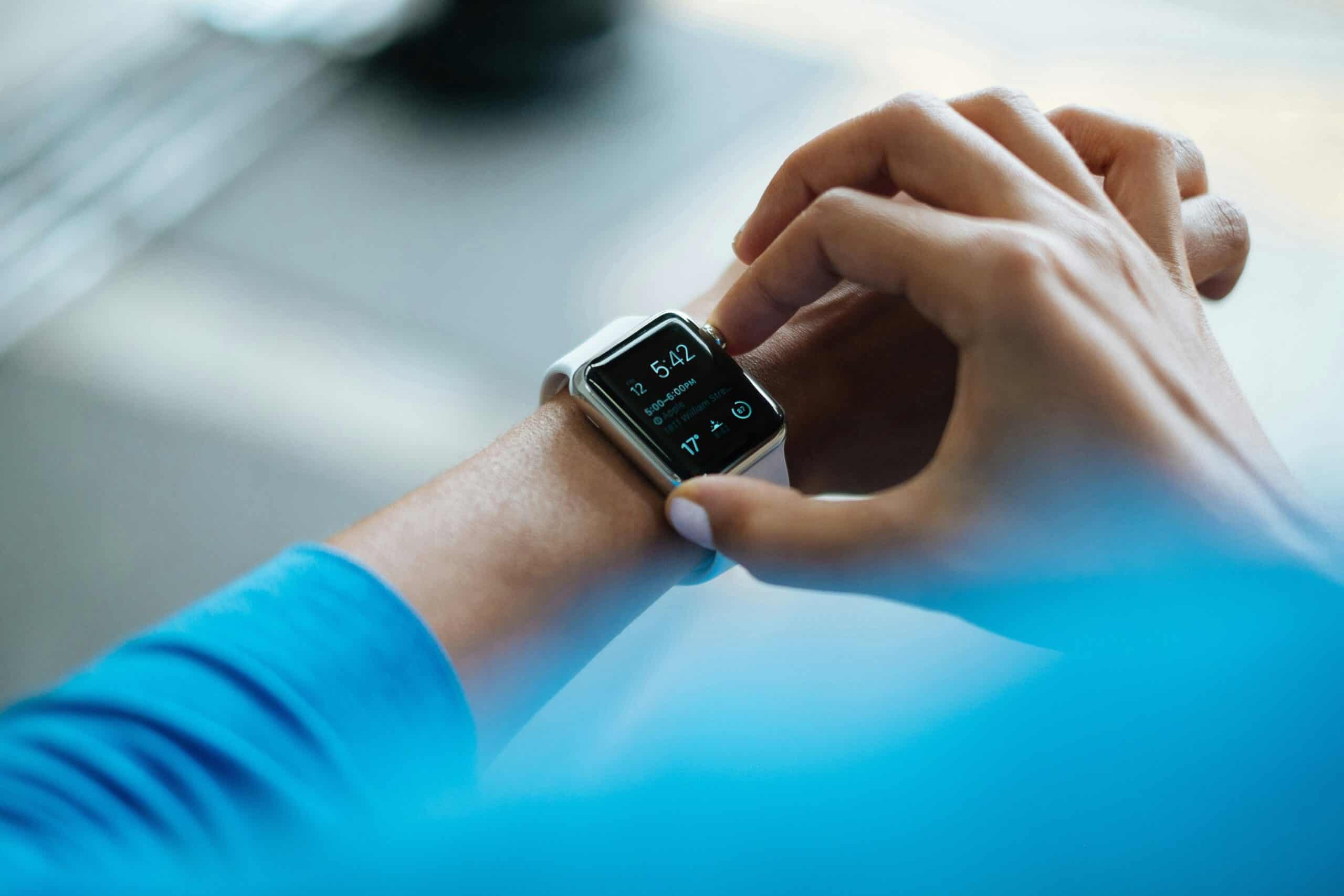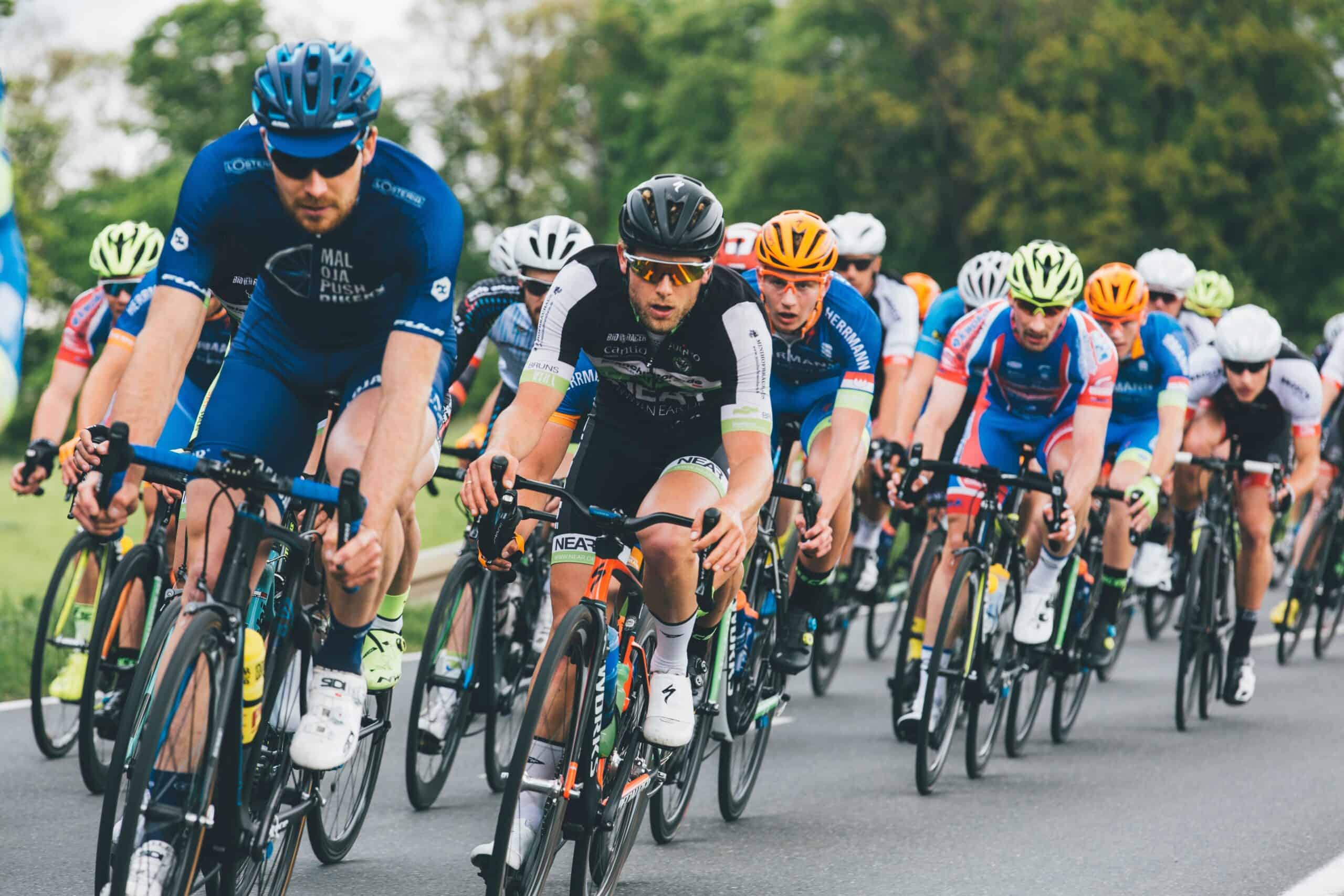Here’s everything you need to know about heart rate training and your running heart rate zones and if monitoring it is right for you.
If you’re looking to make gains and hit personal bests in your next race, it makes sense that you’re thinking about heart rate training. When used correctly, it can be a secret weapon to unlocking your best running performance.
Any good training program is going to follow the FITT principles to help you reach your goals.
The FITT Principles are:
- Frequency
- Intensity level
- Time, and
- Type of exercise
In heart rate training, intensity is highlighted as a the most important component. Especially, as training at higher intensities has been proven to improving your cardiorespiratory efficiency during exercise. You’ll be familiar with this as your VO2 Max.
Heart rate training uses your heartbeat or beats per minute (bpm) to monitor your training effort.
In doing so, you receive feedback and actual numbers telling you if you’re training at the right intensity. Compared to measuring your effort by your rate of perceived exertion (RPE), your heart rate is a more objective number that can tell you whether to increase your speed or slow down.
If you’re new to the world of RPE, BPMs, and VO2 Max – and any other acronyms that have to do with heart rate zone training – don’t fear. We break it all down in this article. Here’s what to expect:
- What is heart rate training?
- How to find your maximum heart rate
- How to establish your heart rate training zones
- What equipment you should have to track and monitor heart rate
- The benefits of heart rate training
- Who would benefit most from heart rate training
- The downsides of heart rate training
- How heart rate training helps during cross training

What is heart rate training?
Heart rate training is like having a personal coach inside your body.
Monitoring your heart rate is one of the easiest metrics you can monitor to guide you to train smarter and more efficiently.
The basic idea is that different levels of effort correspond to different heart rates, so by monitoring your heart rate, you can adapt your runs to achieve specific goals.
Running heart rate training can help push the limits of aerobic training while ensuring you stay within a range that won’t overtax your body.
More and more, you’ll read about the importance of slow running and it’s impact on running performance (which is, positively).
But how would I determine what “slow running” is for me compared to you? It has to do with your heart rate zones and correlated lactic acid production.
How to find your maximum heart rate.
Different levels of effort are broken into target heart rate zones.
To figure out what your target heart rate is in each zone, you first need to find your max heart rate (MHR), or the maximum number of beats per minute your heart can handle during intense exercise.
Related: Why Polarized Training for Runners Might Unlock Your Best Running Performance
There are various ways to estimate it, but the most accurate equation based on a recent study is 211-(0.64 x AGE). You can also plug it into this MHR calculator from Norweigan University of Science and Technology, which will take into account your sex and if you take beta blockers.
Age-based equations are not perfect in determining your MHR. Since resting heart rate, sex, medications, and most importantly genetics, play a role in maximum heart rate, the solutions to these equations are truly theoretical.
A treadmill stress test offers the best read, but not everyone has access to a lab test. You’ll often see these same treadmill runs as a VO2 Max test.
The Norweigan lab offers an alternate method that you can do if you own a heart rate monitor (more on equipment below).
We recommend consulting a doctor (or at least a coach or personal trainer) if you are new to exercise before you attempt this test.
How to conduct a max heart rate test
Do a warmup run until you break a sweat. There is no hard and fast rule here. Between 5 and 15 minutes should be an effective warmup.
Engage in two interval sessions – the amount of time for each should be four minutes.
During these intervals, aim for a level of intensity that makes it difficult to carry on a conversation due to shortness of breath.
Rest for four minutes after each interval.
For your third interval, increase the intensity.
Approximately two minutes into the third interval, push your speed even further and run until you reach a point of exhaustion. This is where your HR max will be reached.
Check your heart rate monitor to capture your MHR.
More on the device you’ll need to effectively capture your heart rate below.

Your heart rate training zones
Once you’ve got your MHR, you can define different heart rate zones, each corresponding to a different level of effort.
Below, you’ll find a percentage chart by Carl Foster, Ph.D., the past president of the American College of Sports Medicine.
Zone 1: 50-59% of threshold heart rate, aerobic: light effort level with easy breathing. You can hold a complete conversation. Often, this is a walk. Use it: for warm-up and cool-down, easy recovery workouts.
Zone 2: 60-69% of threshold heart rate, aerobic: Low-intensity effort with the ability to hold a conversation with ease. It is good for general endurance and building aerobic capacity. Most endurance athletes should be training in Zone 2 the most. Use it: for easy runs, recovery runs, warm up and cool down, and easy long runs.
Related: Why Zone 2 Training Might Be The Most Important Running You Do
Zone 3: 70-79% of threshold heart rate, aerobic: Medium intensity. It boosts your lactate threshold, improving your ability to run at a challenging but sustainable pace. You can hear yourself breathing, but you can still get out full sentences. Use it: for tempo runs, race pace runs.
Zone 4: 80-89% of threshold heart rate, anaerobic: This is a hard effort, high-intensity training to improve speed and power. You can utter one-word responses. Use it: mid-distance intervals and repeats.
Zone 5: 90-100% of threshold heart rate, anaerobic: This feels like you’re redlining! You can’t talk in this zone. Use it sparingly to work fast-twitch muscles: for short interval workouts and sprints.
So, let’s assume you have effectively conducted the treadmill test and found your maximum heart rate to be 190 bpm. These would be your corresponding average heart rate ranges.
- Zone 1: 95 – 112 bpm
- Zone 2: 114 – 131 bpm
- Zone 3: 133 – 150 bpm
- Zone 4: 152 – 169 bpm
- Zone 5: 170 – 190 bpm

What equipment do I need to track my heart rate?
Certain devices on the market can give you an accurate reading of your heart rate.
Most GPS-running watches have heart rate monitors built in.
Many endurance athletes tout running straps that go around your chest are the most accurate devices.
Then, there are heart rate monitors that strap around your upper arm, which also have a good track record. Here are the pros and cons of each:
Running Watch
Because your running watch is worn on your wrist and will show you in real-time your heart rate (as well as pace, distance, and other useful metrics) it’s a convenient option for runners.
Most watches will seamlessly integrate with your training apps, so your heart rate progress will be tracked. If you have a coach or a dynamic training plan, this is useful to individualize your training sessions.
Additionally, if you wear your watch throughout the day, you’ll get a good look at your heart rate patterns and overall cardiovascular health.
The biggest drawback is accuracy. Compared to chest straps, wrist heart rate monitoring is simply not as precise especially at high intensities.
Our favorite smart watches are the COROS Pace and Garmin Forerunner 945.
Chest Strap
Accuracy is the biggest pro when it comes to using chest straps to monitor heart rate.
If you are serious about heart rate training and plan to prioritize it over other methods, a chest strap is the way to go.
There are, however, a few cons.
First, your chest strap will need to be connected to a running or fitness watch or a smartphone to get your reading.
If you have a watch that integrates with the chest strap, you’ll be fine. It will then have all the benefits of a running watch. If you’re depending on your phone, you’ll have to carry it with you on your runs.
The most popular and accessible model on the market today is the Polar H10 Heart Rate Monitor.
Arm strap
For people who find chest straps uncomfortable, arm straps have a slight edge over fitness watches when it comes to accuracy.
If you’re considering purchasing a device, there are a few brands that have advanced heart rate tracking technology to be incredibly precise.
Check out the following products which have accurate heart rate monitoring.

What are the benefits of heart rate training?
Heart rate training has a bunch of cool perks.
Here’s why so many runners use heart rate training to meet their goals.
Boosted Performance
By tuning into their heart rate zones, athletes can dial in on specific intensities, giving their overall performance a serious upgrade.
One study published in the International Journal of Exercise Science examined how threshold training contributed to gains in Vo2max for athletes competing in triathlons.
In eight weeks, all athletes showed improvement but those who trained for longer in threshold training zones improved more than those who trained for less time in the higher zone.
By using heart rate zones in their exercise programs to work on Vo2max improvement, they were able to find the optimal and most efficient training method.
Fewer Injuries, Faster Recovery
Most heart rate training programs (and running coaches who prefer this training method) will prescribe the majority of runs in Zone 2, especially if you’re gearing up for a full or half marathon.
Running at a lower intensity reduces the risk of overtraining because you place less stress on tendons, bones, and muscles. It also trains your body to use oxygen more efficiently.
Many runners are running their easy runs too fast and don’t even know it. Paying attention to your heart rate can help you nail the pace you need to build your aerobic engine.
Personalized Training
Heart rate zones are unique to each individual, allowing for personalized training that takes into account individual fitness levels and goals.
For example, your goals will change if you’re trying to PR a 5K versus trying to finish a marathon. You will want to focus on speed endurance and train your anaerobic system more for the 5K and really focus on steadily building your aerobic endurance for the marathon.
Knowing what zone to train in will be more tailored to you than a pace chart and more objective than RPE.
Who should do heart rate training?
All different types of runners can use heart rate to optimize training. Beginners, in particular, often struggle with accurately gauging their effort levels.
Related: How to train for your first half marathon
Heart rate training can help you find a feel for the prescribed paces while avoiding overexertion.
People who are looking to shed some pounds through physical activity will benefit because it optimizes the balance between calorie burn and fat utilization.
Working in the different zones ensures that workouts are effective for weight loss without risking excessive strain.
Long-distance runners can leverage heart rate training to enhance their aerobic capacity.
This type of training is amazing for marathoners or half marathoners who need to train their bodies to use energy efficiently to maintain a steady pace over extended periods.
For runners prone to injuries, heart rate training serves as a guide to avoid overtraining. It’s especially useful for veteran runners coming back from a sidelining injury.
By relying on heart rate as a measure, they can work within their fitness parameters to rebuild their foundation.
Finally, because heart rate training is so individualized, anyone with a time goal can use heart rate training to optimize their training plans.
Are there downsides to heart rate training?
While it might seem black and white, heart rate training can be tricky to get right.
Getting an accurate maximum heart rate
First, you must have a good sense of your maximum heart rate to know what zones (or heart rate range) you need to be in during training.
Since most runners don’t have access to a lab test, it’s hard to get this nailed down. The equations we rely on don’t factor in key markers like genetics, medications, and sometimes even sex.
Performing a running test to get max heart rate can be faulty as well. That’s because many external factors influence heart rate that will not only throw off an MHR test but also your training.
A bad night’s sleep, a hot day, altitude, a triple latte, or a salty lunch can all affect your heart rate. These fluctuations may not reflect your fitness level.
While many coaches say this is a good thing for training runs – that it allows you to adjust your pace based on where your body is that day – other coaches say this can prohibit your potential.
Getting an accurate heart rate monitor
The accuracy of heart rate monitors is imperfect and varies due to factors like movement and skin color. Changes in heart rate can be delayed, especially during high-intensity intervals or repeats. Often the solution for this delay is to rely on your perceived exertion in combination with your heart rate, which is a subjective measurement. This is when training by pace might be more effective.
Overcomplicating running heart rate zones
Finally, many runners are already obsessed with numbers. Adding in the complexity of training within a certain zone might cause anxiety or an over-reliance on heart rate data. For some, this will take the joy out of running or cause unnecessary stress. (Oh, and that might make your heart rate go up!)
Of course, every training method has its limitations. It’s best to use a holistic approach and pay attention to pacing, duration, hr zones, and RPE to create a balanced training program.

Heart rate training for cross-training
One of the greatest benefits of heart rate training is how versatile it can be when used for cross-training.
Cross-training is an awesome way to improve your aerobic capacity without pounding the pavement day after day, reducing the risk of overuse injuries, general fatigue, and burnout.
But often, we use time as a reference point on cross-training days, like 30 minutes of cycling or an hour of swimming or 10 minutes of rowing.
It’s hard to translate running miles to bike miles or running to anything in the water. But if you have a heart rate monitor, you can use your cross-training days to build endurance (e.g. 60 minutes of work in Zone 2), or build your speed-endurance (10 minutes in Zone 3 with a 5-minute break in Zone 1 X 3 times), or crush some speedwork with interval training (try 30 seconds in Zone 4 or Zone 5, 2 minutes in Zone 2 and repeat for 30 minutes).
If you’re strength training, heart rate is not a good data point to go by. You’ll want to track the weight you’re using or the number of reps to help progress over time.
Heart rate training is an incredible method to use in your training.
For runners looking to tailor their running plans to their goals, it’s a game-changer. All you need is your maximum heart rate, a monitor, and an understanding of how to use the zones and why.
FAQS
Which heart rate zone is best for running?
While the ideal heart rate zone for running will depend on your goals and race distance, the sweet spot of running zones is Zone 2. Zone 2 is your steady state where your slow-twitch muscles burn through fats and carbs to give your body energy. It’s a level of activity that can be sustained for a long time thanks to regulated blood lactate levels.
What is a good heart rate for running?
The ideal heart rate for runners varies based on your resting heart rate, age, sex, and other environmental factors.
Should my heart rate be at 170 when running?
To find out your ideal heart rate for running, first find your maximum heart rate and then look at a heart rate zone chart. That being said, using a generalized equation, 170 is a good target heart rate for most runners ages 20 and below.
Is 180 heart rate good for running?
To find out your ideal heart rate for running, first find your maximum heart rate and then look at a heart rate zone chart. Looking at target heart rate zones by age, 180 is fairly high. Even athletes 20 years and younger would be creeping into a more anaerobic zone at 180.
It’s important to use these higher zones intentionally and not try to run at your threshold for too long. If you are at your MHR without much effort, schedule an appointment with your doctor.
What is a good running heart rate for a 12-year-old?
For a 12-year-old, the estimated maximum heart rate – based on a theoretical equation – would be around 196 beats per minute. Kids should aim for moderate to vigorous intensity levels, which typically correspond to 50-85% of their estimated maximum heart rate (i.e. within Zones 1 to 4). Based on this rough estimate, a 12-year-old should look for a target heart rate range of about 98-167 bpm during exercise. Remember, actual heart rate ranges are very individualized and dependent on several variables.
–
Everything featured on Half Marathon Guide is independently selected and curated. We may receive a small commission on purchases made from some of our links.




